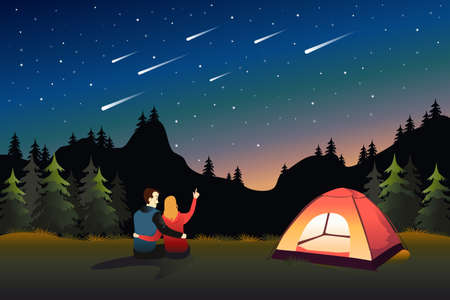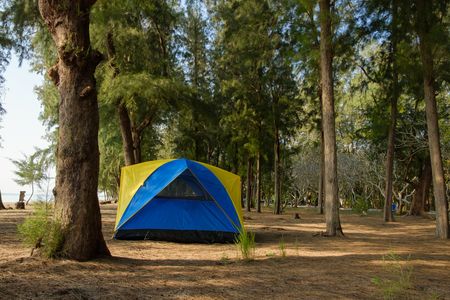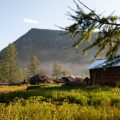Introduction to Yosemite Camping
Yosemite National Park, located in the heart of California’s Sierra Nevada mountains, is one of America’s most iconic and breathtaking natural destinations. Spanning over 750,000 acres, this national treasure is home to towering granite cliffs, ancient sequoia trees, dramatic waterfalls, and diverse wildlife. Whether youre gazing up at El Capitan or hiking through the Mariposa Grove, Yosemite offers a landscape that feels both humbling and inspiring.
While there are many ways to experience Yosemite, camping is one of the most immersive and rewarding options. Spending the night under star-filled skies, waking up to birdsong and fresh mountain air, and having direct access to trails and viewpoints make camping an ideal choice for nature lovers and adventurers alike.
Camping in Yosemite allows you to truly slow down and soak in the parks natural rhythms. With a variety of campgrounds ranging from family-friendly sites with amenities to more remote backcountry spots for experienced campers, theres something for everyone.
Why Choose Camping in Yosemite?
Camping offers a unique opportunity to connect with nature in a way that day trips or hotel stays simply can’t match. Here are some key reasons why camping is the preferred way to explore Yosemite:
| Benefit | Description |
|---|---|
| Proximity to Nature | Wake up just steps away from trails, rivers, and scenic views. |
| Extended Exploration Time | Enjoy early morning hikes or late-night stargazing without worrying about travel time. |
| Affordable Lodging | Campsites are often more budget-friendly than nearby hotels or lodges. |
| Family & Group Friendly | A fun way for families and friends to bond around campfires and shared adventures. |
Natural Highlights of Yosemite
Before diving into specific campsites and trails, it’s helpful to get familiar with some of the park’s most famous features:
- El Capitan: A massive granite monolith beloved by rock climbers worldwide.
- Half Dome: An iconic peak offering one of the park’s most challenging hikes.
- Yosemite Falls: One of the tallest waterfalls in North America.
- Mariposa Grove: Home to hundreds of giant sequoias, including the Grizzly Giant.
- Tuolumne Meadows: A serene high-country area filled with wildflowers and alpine lakes (seasonal access).
No matter where you set up camp, youll be surrounded by stunning vistas and countless opportunities for adventure. In the following sections, we’ll cover the best places to camp, must-see trails nearby, seasonal tips for planning your trip, and more.
Top Campgrounds in Yosemite
Camping is one of the best ways to fully experience the natural beauty of Yosemite National Park. Whether youre looking for a spot close to popular hiking trails or a more secluded area with mountain views, Yosemite has something for every kind of camper. Below is a breakdown of some of the most popular campgrounds inside the park, including what amenities they offer and helpful tips for making reservations.
North Pines Campground
Located in Yosemite Valley, North Pines is a favorite among campers who want easy access to iconic spots like Half Dome and Yosemite Falls. It’s nestled between tall pine trees and offers scenic views with the Merced River nearby.
Amenities:
- Flush toilets
- Drinking water
- Picnic tables and fire rings
- Bear-proof food storage lockers
Reservation Tips:
This campground is highly competitive during peak season (spring through fall). Reservations are required and can be made up to five months in advance on Recreation.gov. Set an alarm—sites get booked within minutes after they’re released.
Upper Pines Campground
Also located in Yosemite Valley, Upper Pines is open year-round and is one of the largest campgrounds in the park. Its perfect for first-time visitors who want to be close to shuttle stops and major trailheads.
Amenities:
- Flush toilets
- Drinking water
- Fire pits with grills
- Food lockers
Reservation Tips:
Book as early as possible, especially if you’re visiting in summer or over a holiday weekend. Winter camping here can be quieter and more peaceful, but always check weather conditions before planning your trip.
Tuolumne Meadows Campground
Sitting at nearly 8,600 feet elevation, Tuolumne Meadows offers a completely different experience from the valley floor. This campground is ideal for those seeking alpine scenery and access to high-country trails like Cathedral Lakes or Lyell Canyon.
Amenities:
- Flush toilets (limited)
- Potable water (seasonal)
- Picnic tables and fire rings
- Bear boxes for food storage
Reservation Tips:
This site is open seasonally, usually from July through September due to snow. Reservations are strongly recommended, though some first-come, first-served sites may be available early or late in the season depending on snowpack levels.
Quick Comparison Table
| Campground | Location | Open Season | Amenities | Reservations Required? |
|---|---|---|---|---|
| North Pines | Yosemite Valley | Spring–Fall | Flush toilets, water, food lockers | Yes |
| Upper Pines | Yosemite Valley | Year-round | Toilets, water, fire pits, lockers | Yes |
| Tuolumne Meadows | Tierra High Country | Summer Only (Jul–Sep) | Seasonal water, toilets, lockers | Mainly Yes* |
* Some walk-in sites may be available depending on snow conditions. Always check current park alerts before heading out.
Pro Tip:
If you don’t get a reservation right away, try using cancellation trackers or consider less crowded campgrounds like Bridalveil Creek or Hodgdon Meadow for more availability and great experiences.

3. Must-Hike Trails for Campers
One of the biggest perks of camping in Yosemite National Park is easy access to some of the most iconic and scenic hiking trails in the U.S. Whether youre staying at a developed campground or backcountry site, there are plenty of trails that start just minutes from your tent. Here are a few must-hike routes that combine incredible views with convenient trailheads near popular campgrounds.
Mist Trail
The Mist Trail is one of Yosemite’s most famous hikes, and for good reason. Starting near Happy Isles in Yosemite Valley, this trail takes you up close to Vernal Fall and Nevada Fall. The trail is especially popular in spring and early summer when the waterfalls are roaring, and you’ll definitely feel the mist—so pack a rain jacket!
Trail Details:
| Trailhead Location | Happy Isles (near North Pines Campground) |
|---|---|
| Distance | Up to 7 miles round trip (to Nevada Fall) |
| Difficulty | Moderate to Strenuous |
| Best Season | Spring through early summer |
Yosemite Falls Trail
This challenging but rewarding hike gives you front-row views of the tallest waterfall in North America. The trail begins near Camps 4 and Lower Pines Campground, making it an ideal morning hike for campers who want to beat the crowds. As you climb, youll enjoy sweeping views of Yosemite Valley, Half Dome, and the falls themselves.
Trail Details:
| Trailhead Location | Camp 4 area (Yosemite Valley) |
|---|---|
| Distance | 7.6 miles round trip to Upper Falls |
| Difficulty | Strenuous |
| Best Season | Late spring through fall (early morning start recommended) |
Glacier Point via Four-Mile Trail
If youre up for a serious climb, the Four-Mile Trail leading to Glacier Point offers jaw-dropping panoramas of Yosemite Valley, El Capitan, and Half Dome. While Glacier Point can also be reached by car in summer, hiking there makes the view even more rewarding. This trail starts not far from Southside Drive, which is accessible from multiple valley campgrounds.
Trail Details:
| Trailhead Location | Southside Drive near Swinging Bridge Picnic Area |
|---|---|
| Distance | 9.6 miles round trip |
| Difficulty | Strenuous with steep elevation gain |
| Best Season | Late spring through fall (check for snow closures) |
No matter which trail you choose, always bring plenty of water, wear sturdy hiking shoes, and check current trail conditions before heading out. Starting early helps you avoid crowds and afternoon heat—plus youll have more time to relax back at your campsite afterward!
4. Best Times to Camp and What to Expect Each Season
Camping in Yosemite National Park is a year-round adventure, but each season offers something unique—from gushing waterfalls in the spring to peaceful snowy landscapes in the winter. Knowing what to expect each season can help you plan better and pack smarter. Here’s a breakdown of what each season brings and how to prepare for it.
Spring (March – May)
What to Expect: Spring is all about melting snow, blooming wildflowers, and powerful waterfalls. Yosemite Falls, Bridalveil Fall, and Vernal Fall are at their most impressive during this time. Some higher-elevation campgrounds may still be closed due to snow, but lower elevation sites like North Pines often open by late April.
Tips:
- Pack waterproof gear—trails can be wet and muddy.
- Check road conditions before heading out, especially for Tioga Road or Glacier Point Road.
- Expect chilly nights; bring warm sleeping bags and layers.
Summer (June – August)
What to Expect: Summer is peak season with warm weather and fully accessible trails and campgrounds. This is when Yosemite sees the highest number of visitors, so early reservations are a must. The days are long, making it perfect for hiking iconic trails like Half Dome and Mist Trail.
Tips:
- Book campsites months in advance—campgrounds fill up fast.
- Start hikes early to beat the heat and crowds.
- Bring plenty of water, sunscreen, and bug spray.
Fall (September – November)
What to Expect: Fall brings fewer crowds, cooler temperatures, and beautiful autumn foliage. While some services begin shutting down in October, its a quieter time to enjoy the park. This season is ideal for photography and relaxed camping experiences.
Tips:
- Dress in layers—mornings can be crisp while afternoons remain mild.
- Pine needles and fallen leaves make trails slippery—wear good hiking boots.
- Be aware that some campgrounds close for the season by mid-October.
Winter (December – February)
What to Expect: Winter transforms Yosemite into a serene snow-covered wonderland. While many roads are closed, areas like Yosemite Valley remain accessible. Campers can stay at open year-round campgrounds like Camp 4 or Upper Pines, though winter camping requires more preparation.
Tips:
- Use four-season tents and cold-weather sleeping bags.
- Tire chains may be required—check road conditions daily.
- Skiing and snowshoeing are great ways to explore the park in winter.
Seasonal Overview Table
| Season | Main Attractions | Crowd Level | Campsite Availability |
|---|---|---|---|
| Spring | Waterfalls, Wildflowers | Moderate | Semi-limited (lower elevation only) |
| Summer | Main Trails, Scenic Vistas | High | Difficult without early reservation |
| Fall | Autumn Colors, Wildlife Viewing | Mild | Adequate until campground closures begin |
| Winter | Snow Activities, Solitude | Low | Llimited (only select sites open) |
5. Essential Gear and Safety Tips
Preparing the right gear and understanding safety practices are key to having a smooth and enjoyable camping experience in Yosemite National Park. Whether youre staying in a developed campground or venturing into the backcountry, heres what you need to know before heading out.
Packing Checklist: What to Bring
Use this simple checklist to make sure you’ve packed all the essentials for your Yosemite adventure:
| Category | Items |
|---|---|
| Camping Gear | Tent with rainfly, sleeping bag (rated for season), sleeping pad, camp chairs, tarp or groundsheet |
| Cooking Essentials | Portable stove or grill, fuel, lighter/matches, cookware, utensils, biodegradable soap, sponge, food storage containers |
| Clothing | Layered clothing (base layer, insulating layer, waterproof outer layer), hat, gloves (in cooler months), hiking boots or trail shoes |
| Personal Items | Sunscreen, insect repellent, toiletries, first aid kit, medications, map of Yosemite, flashlight or headlamp (with extra batteries) |
| Food & Water | Sufficient drinking water or water filtration system, high-energy snacks, meals for your stay |
| Extras | Camera, binoculars, guidebook, daypack for hikes, bear spray (optional but useful in some areas) |
Bear Safety Guidelines
Bears are active in Yosemite and protecting them—and yourself—starts with proper food storage. Follow these important rules:
- Use Bear-Proof Storage: All food and scented items must be stored in provided bear lockers or approved bear canisters.
- No Food in Cars: Never leave any food or scented products (including toiletries) in your vehicle. Bears can break into cars if they smell something tempting.
- No Feeding Wildlife: Feeding animals is illegal and dangerous—it encourages aggressive behavior and endangers both animals and people.
- Campsite Cleanliness: Keep your site clean at all times. Immediately dispose of trash in bear-proof dumpsters.
Staying Comfortable and Safe Year-Round
The weather in Yosemite can change quickly depending on elevation and time of year. Here are some seasonal tips to keep you comfortable and safe:
Spring & Fall Camping Tips:
- Nights can get chilly—bring a warm sleeping bag rated for cold temperatures.
- Mud is common during snowmelt—pack waterproof boots and extra socks.
Summer Camping Tips:
- Pace yourself on hikes and stay hydrated—temps can soar mid-day.
- Mosquitoes may be active—use repellent and wear long sleeves in the evening.
Winter Camping Tips (for experienced campers):
- You’ll need 4-season gear including an insulated tent and snow-rated sleeping bag.
- Avalanche awareness is essential if venturing into backcountry areas.
The more prepared you are with the right gear and knowledge about local wildlife and weather conditions, the better your Yosemite camping trip will be. Always check current park alerts before heading out!


